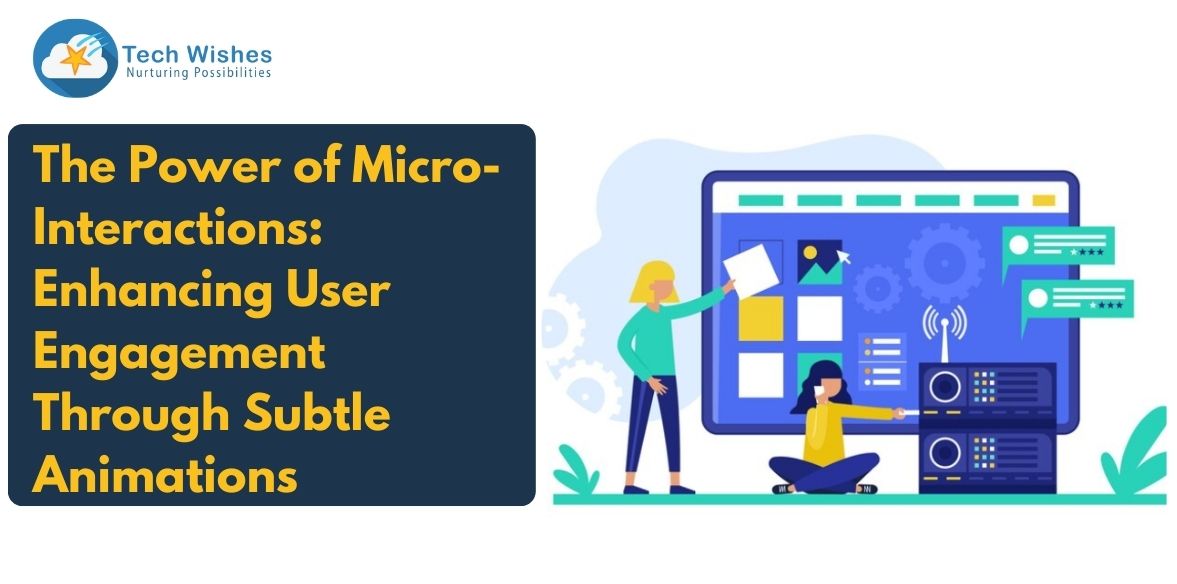
The Power of Micro-Interactions: Enhancing User Engagement Through Subtle Animations
As our web developers in Kolkata say in the world of web design and development, the smallest details can have the biggest impact. Micro-interactions, those tiny, often overlooked animations and feedback responses, have become a key element in enhancing user experience (UX). While they might seem like minor design elements, micro-interactions play a crucial role in guiding users through websites and apps, making interactions intuitive, enjoyable, and memorable.
What Are Micro-Interactions?
Micro-interactions are small, subtle design elements that respond to user actions. These can include anything from a "like" button animation when clicked to a loading spinner providing feedback during a download. Unlike larger animations that focus on storytelling or visual impact, micro-interactions are quick and specific, usually designed to complete one task or offer feedback for a particular action.
The Power of Micro-Interactions in Web Design
Website designers in Kolkata elaborate that micro-interactions are more than just decorative elements; they’re powerful tools for improving user engagement and experience. Here’s how they can transform your website:
Increased User Engagement
Micro-interactions make a website feel alive and responsive. By providing immediate feedback when a user acts, they help maintain the user’s attention and encourage further interaction. For example, a “like” button that animates when clicked creates a sense of accomplishment and keeps users engaged.
Guiding User Behaviour
Our team of web designers in Kolkata suggest that subtle animations can guide users toward desired actions without overwhelming them. For instance, an animated call-to-action (CTA) button can gently nudge users to complete a purchase or sign up for a newsletter. These interactions guide users in a way that feels natural rather than forced.
Enhancing User Feedback
Feedback is crucial for good UX, and micro-interactions provide an immediate response to user actions. Whether it’s a loading spinner indicating progress or a small “success” message after form submission, these micro-animations keep users informed and reassured that their actions are being processed.
Building Brand Personality
Micro-interactions can also add a layer of personality to your brand. By designing these interactions thoughtfully, our website design company in Kolkata can help create an emotional connection with users. For example, playful animations or custom sounds can make your website feel more human and relatable.
Reducing Friction
Complex processes, like form-filling or navigation, can be made smoother and more intuitive with micro-interactions. A well-timed animation can draw attention to the next step in a process or confirm that an action has been completed successfully, reducing user frustration.
Components of Micro-Interactions
Micro-interactions may be subtle, but they are composed of multiple elements that make them effective:
Trigger- The trigger is what initiates the micro-interaction. This could be an action taken by the user, like clicking a button, hovering over an element, or scrolling down a page.
Rules- Rules define what happens after the trigger is activated. For example, if a user clicks a “submit” button, the rule might be to show a loading spinner and then display a success message once the submission is complete.
Feedback- Feedback is the response that users receive after interacting. This could be a visual cue, sound, or vibration. For example, a heart icon filled with colour when a user clicks is the feedback that the action was successful.
Loops & Modes- These refer to what happens if the interaction repeats or if there are different states of the same interaction. For example, a “play” button changing to a “pause” button when clicked represents a loop that switches between two modes.
Micro-Interactions vs. Animations: What's the Difference?
Although micro-interactions are often considered a form of animation, they serve a different purpose. Let’s break down the difference:
Micro-interactions are task-specific, short, and subtle. They aim to enhance UX by providing feedback or guiding users through interactions. Examples include hover effects, button animations, and loading indicators.
Animations, on the other hand, are larger-scale visual effects designed to grab attention or tell a story. Examples include animated backgrounds, transitions between pages, or animated banners.
Both micro-interactions and animations contribute to a dynamic website, but micro-interactions focus more on improving the usability and interactivity of the website.
Conclusion
Micro-interactions may seem like a small detail, but their impact on user engagement and overall UX is enormous. They transform a static website into a dynamic, interactive experience that feels alive and responsive to users' needs. At Tech Wishes, the best website development company in Kolkata we believe in creating websites that not only look great but also engage users in meaningful ways. By incorporating micro-interactions into your web design, you can build a more intuitive, enjoyable user experience that keeps visitors coming back.
FAQs
How can micro-interactions enhance the user experience?
Micro-interactions enhance UX by providing immediate feedback, guiding users through tasks, reducing friction in processes, and adding a touch of personality to your website. They make interactions feel more natural and intuitive, increasing user satisfaction.
What is the power of micro-interactions?
The power of micro-interactions lies in their ability to create a seamless, engaging user experience. They keep users informed, help them navigate the site easily, and encourage interaction without being intrusive.
What is the difference between micro-interactions and animations?
Micro-interactions are subtle, task-specific animations that provide feedback or guide users through interactions, while animations are larger, more complex visual effects designed to capture attention or tell a story.
What are the components of a micro-interaction?
The components of a micro-interaction include the trigger (what initiates it), rules (what happens after the trigger), feedback (the response to the action), and loops & modes (handling repeated interactions or different states).
What is the difference between animation and interaction?
Animations are visual effects that focus on storytelling or capturing attention, while interactions involve user participation, such as clicking or hovering, where the design responds to the user's action.